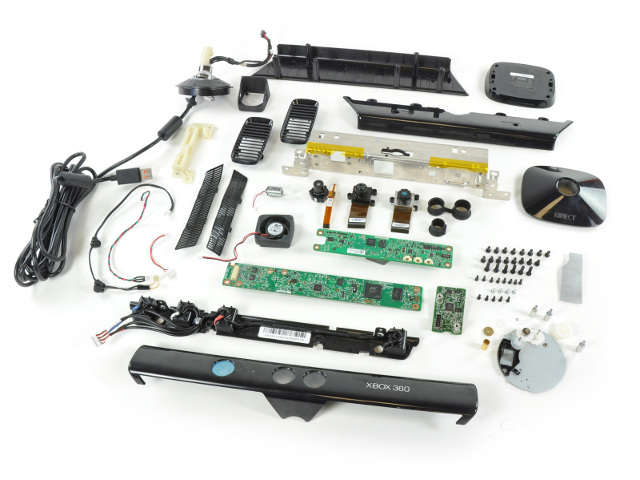The Microsoft Kinect is a peripheral for the Xbox 360 that does away with the need for a conventional controller – instead the player’s body and voice become the controller.
The Kinect sensor consists of:
- 640×480 pixel visible light camera
- 640×480 pixel infrared camera
- Four-microphone sound sensing array
- Class I infrared (780nm) laser diode
The major advantage of the Kinect is that it works in 3D. Previous console vision systems (such as the PlayStation’s structured light” created by a beam of infrared laser light passing through a diffraction grating. This projects a grid of 50000 infrared dots across the playing area. These infrared dots are visible on many cameras with a “night vision” mode.
By comparing how the dot pattern looks, and how it should look, the Kinect can measure the distance between the sensor and the player – producing a “depth map” in the process.
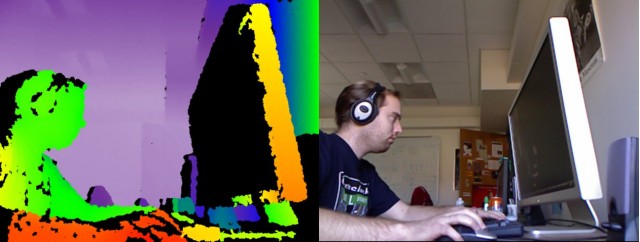 Images from Matthew Fisher. Objects in red are closest to the screen; colours then move through the spectrum to purple objects that are furthest away.
Images from Matthew Fisher. Objects in red are closest to the screen; colours then move through the spectrum to purple objects that are furthest away.
Unlike Sony, who have cracked down on anyone trying to hack the PlayStation; Microsoft have been very open to Kinect hackers; including the team from Cox Lab at Harvard who have developed a portable Kinect-based 3D camera.
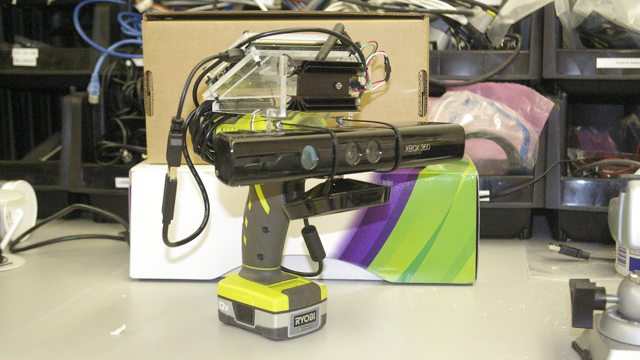
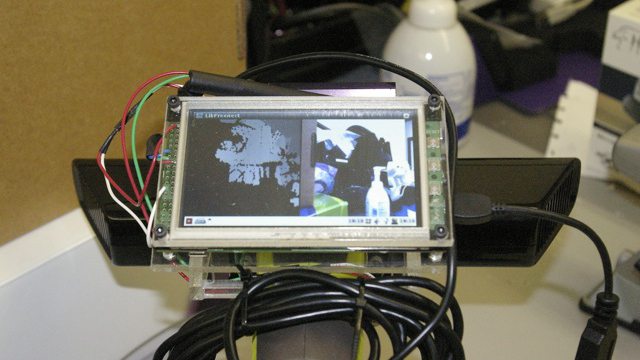
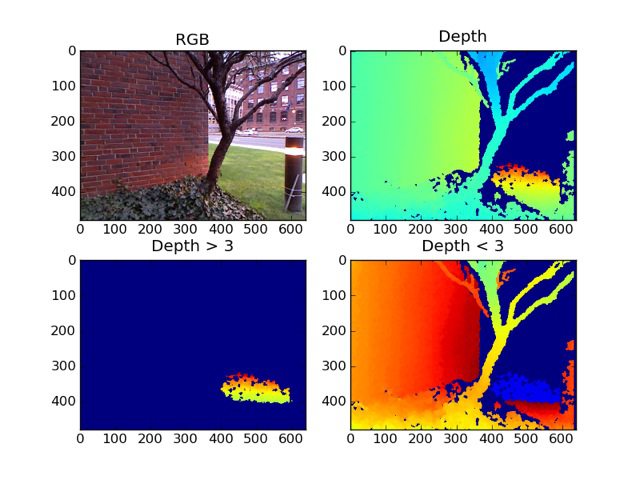
* It has been shown that the depth resolution is non-linear and that the further an object is from the sensor the less information is available about its true distance.
